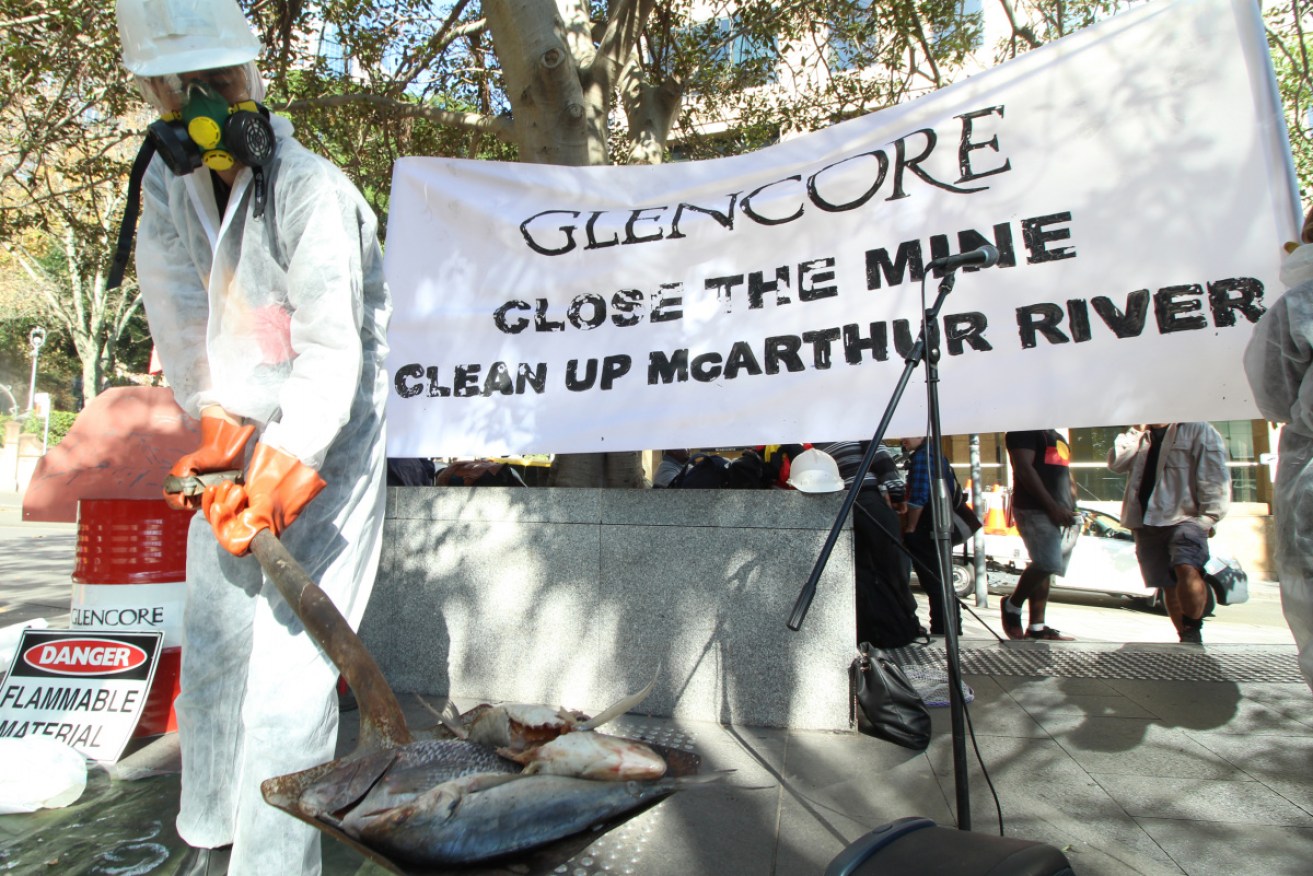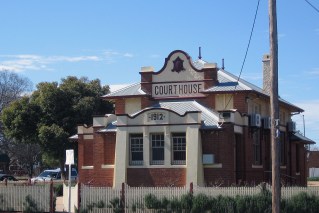McArthur River Mine enters talks over damage to Aboriginal sacred sites

Representatives of the Borroloola Indigenous clans protest in Sydney about the McArthur River mining site in May 2016. Photo: AAP
A massive Northern Territory mine dogged by environmental incidents and alleged damage to Aboriginal cultural sites is set to start negotiations with traditional owners.
McArthur River Mine says it will enter into talks with the Northern Land Council and native title holders to negotiate an Indigenous Land Usage Agreement for the mine and the Bing Bong loading facility on the Gulf of Carpentaria.
“This will involve broad consultation with traditional owners on a variety of matters, including sacred sites and cultural heritage protection,” a spokesman for mine owner Glencore said on Thursday.
“We recognise that while the McArthur River Mine complies with the law, we need to do more to meet community expectation.”
Unlike most mines in northern Australia, McArthur River Mine has never had a comprehensive native title agreement.
To demonstrate McArthur River Mine’s commitment to meaningful and respectful engagement, we have entered into discussions with the Northern Land Council and Traditional Owners to negotiate an Indigenous Land Use Agreement across our NT operations.
More: https://t.co/4hY7qx8eT0 pic.twitter.com/u7b254nIA7— Glencore Australia (@GlencoreAus) April 1, 2021
The mine, which is located about 750 kilometres east of Darwin, has been under fire for ongoing environmental issues and claims its continued operation could damage the sites.
Some of the problems include burning waste rock emitting huge toxic sulphur dioxide plumes, which took more than six years to rectify.
A seeping tailings dam also risks contaminating groundwater with metal and acid, according to a recent report from the University of NSW’s Global Water Institute and the NT Environmental Centre.
The same researchers also found that 22 Indigenous sacred sites were potentially under threat from the mining operations, including the Djirrinmini waterhole, which is believed to be a breeding site for critically endangered sawfish.
This was backed by the NT Aboriginal Areas Protection Authority chief executive Ben Scambary, who recently told a federal parliamentary inquiry that continued expansion of the mine is likely to impact an Indigenous sacred site.
We’re calling on @SenatorDodson to examine the MCArthur River Mine as part of the #Juukan Gorge Inquiry.
In addition to this, a @UnswWater report found 22 sacred sites are at risk from this mine: https://t.co/gVCDVoOFDd https://t.co/jSuTPfDNH8
— Environment Centre NT (@EnviroCentreNT) March 31, 2021
The region’s traditional owners – the Gudanji, Yanyuwa, Garawa and Yanyuwa-Marra peoples – have fought for decades to stop development at the site, including the move from underground to open-cut operations.
Despite previous success in the NT Supreme Court, the NT government has repeatedly passed legislation approving more expansion at the mine.
“Since the zinc, lead and silver deposit was first proposed to be mined, the native title holders have fought to protect their land, and culture,” Northern Land Council chief executive Marion Scrymgour previously said.
“They have also tried to be heard about the social and environmental impacts of the proposed mine.
“But by and large, they have been ignored.”
Traditional owners also want compensation for alleged damage to the cultural sites and the loss of their native title rights.
They have lodged a case against the NT government with the Federal Court for penning the deal to open the mine with Mount Isa Mines Ltd in 1992.
Gudanji man Casey Davey alleges sacred and significant sites had been damaged by mining operations.
“Our totem is right there where they dug up the dirt for the river diversion and the open cut,” he said previously.
Traditional owners have also recently launched legal action against the NT government in the Supreme Court after it slashed the mine’s environmental security bond by almost $120 million to about $400 million.
-AAP








